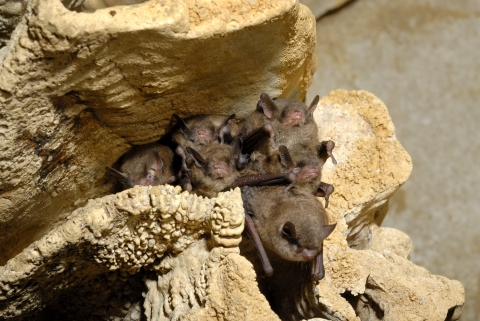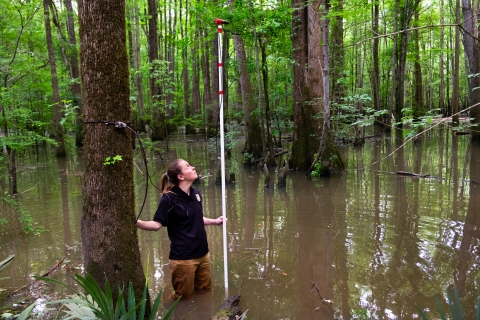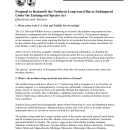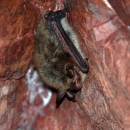Bats are a valuable and fascinating part of Georgia's natural heritage.
They provide a beneficial service by foraging on flying insects, many of which are pests. Georgia is home to 16 species of bats. Some of these appear to be adaptive; they opportunistically roost and forage in altered habitats such as suburban and agricultural landscapes. A few species, however, have specific habitat needs, such as caves with suitable temperature and humidity, or large, hollow bottomland trees. Populations of these species are more vulnerable to habitat alterations and are of conservation concern.
There are currently three bat species that occur in Georgia that receive federal protections under the Endangered Species Act: the federally endangered Indiana bat (Myotis sodalis) and gray bat (Myotis grisescens), and the federally threatened northern long-eared bat (Myotis septentrionalis).
For more information about our bat species of Georgia, please visit the Georgia Department of Natural Resources webpage.
Surveying for Bats in Georgia
Projects within the potential ranges of the Indiana, northern long-eared, or gray bat may benefit from a bat survey. For questions regarding surveys for specific projects, please contact Laci Pattavina at our USFWS Georgia Ecological Services Field Office.
The Service has published the Range-wide Indiana Bat and Northern Long-eared Bat Survey Guidelines.
For additional survey requirements within the state of Georgia outlined by the Georgia Department of Natural Resources Wildlife Conservation Section, please visit this webpage.
Any surveys where bats will be captured must be conducted by individuals with current state and federal scientific collecting/endangered species permits. For more information about federal scientific collection permits, visit the USFWS ePermits website. Note: The most common type of permit needed for endangered species surveys, including bat surveys, is a 3-200-55: Scientific Purposes, Enhancement of Propagation or Survival Permits (i.e., Recovery Permits) and Interstate Commerce Permit. From the ePermits homepage, select “Explore Permits”. From the search page, select “Recovery / Interstate Commerce” under “Endangered Species”. For additional information, contact the Region 4 USFWS Permit Office at permitsR4MB@fws.gov. Apply for a Georgia state scientific collection permit here or contact the Special Permits Unit at +1 (770) 761-3044.
White-Nose Syndrome
White-nose syndrome (WNS) is a malady blamed for the death of millions of bats in the U.S. WNS has been called “the most precipitous wildlife decline in the past century in North America.” The disease is named for the white fungus, Pseudogymnoascus destructans, or Pd, that grows on the muzzles and skin of affected bats. Discovered by a caver in eastern New York’s Schoharie County in February 2006 and documented by state biologists the following winter, WNS has rapidly spread continent wide. WNS was first found in Georgia in February 2013.
The USFWS leads the national response to WNS in the United States. For more information about the WNS Response Team, visit this webpage. For more information on the response to WNS in Georgia, go here.
Bats and Transportation Structures Training
We are proud to offer an online and audio-described version of the "Bats in Bridges" training! This course is intended to help you understand methods to assess transportation structures for the potential of bat use and occupancy, while providing some basic facts about bats life history and their habitat needs.
- Bats and Transportation Structures Survey Training
- Bats and Transportation Structures Survey Training (Audio-Described Version)
Proposal to Uplist the Northern Long-eared Bat Uplisting 2022
Common Questions and Answers about the Proposed NLEB Uplisting 2022, NLEB Critical Habitat, and NLEB 4(d) Rule
Related Stories
Bats are one of the most important misunderstood animals.
Bat Conservation International's 2023 State of the Bats Report



















